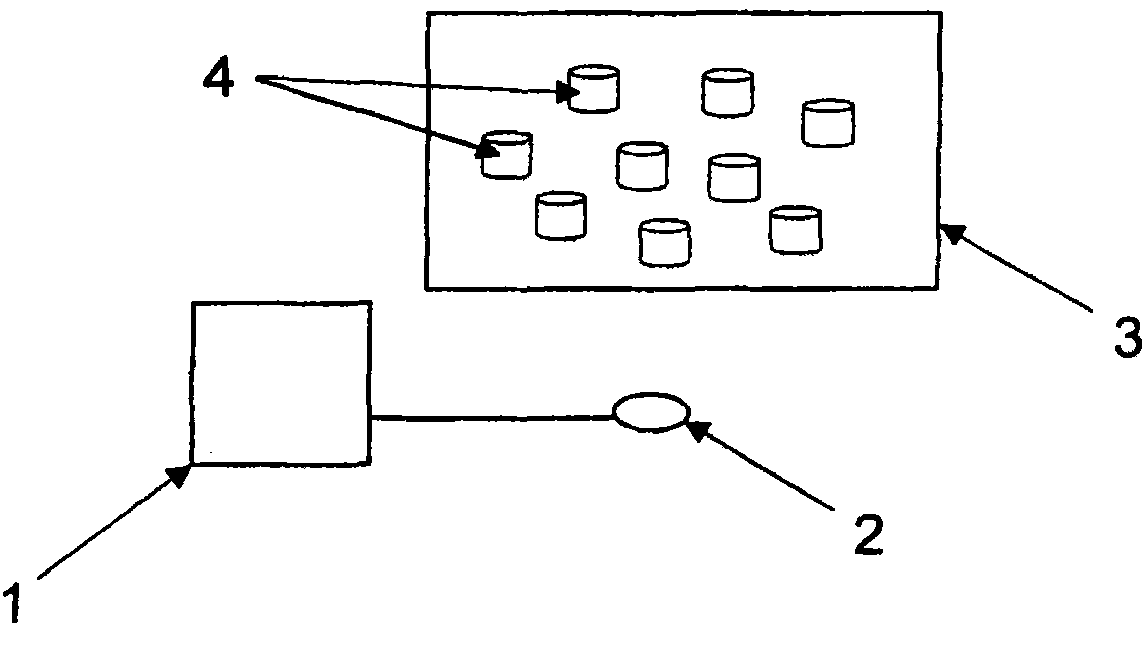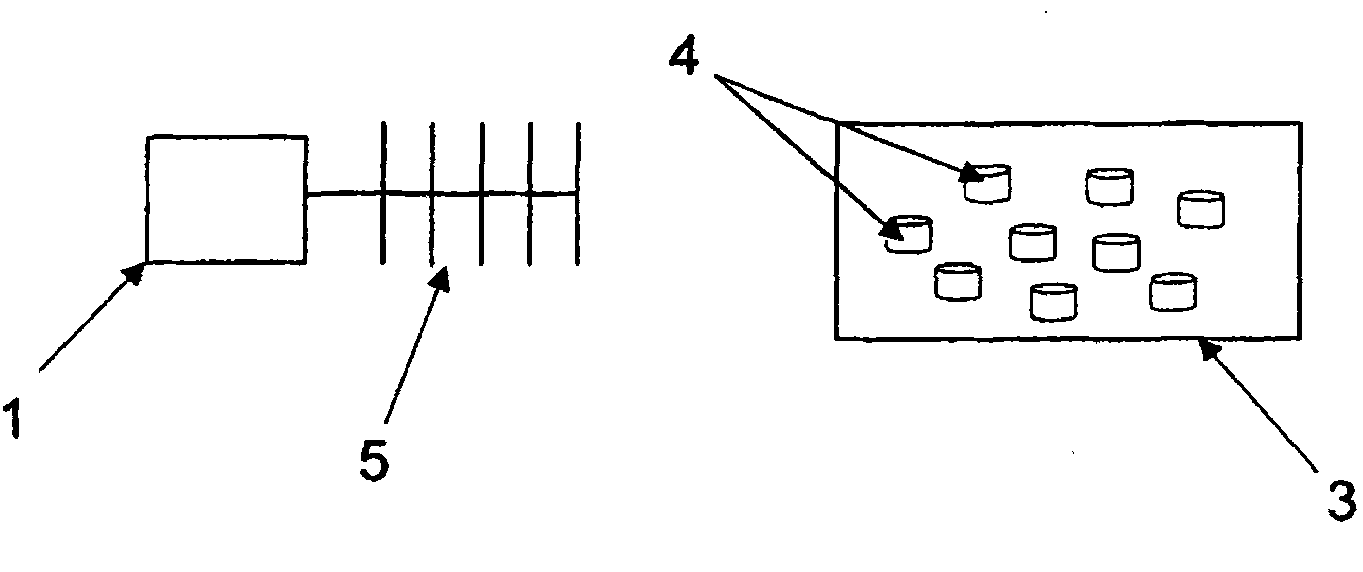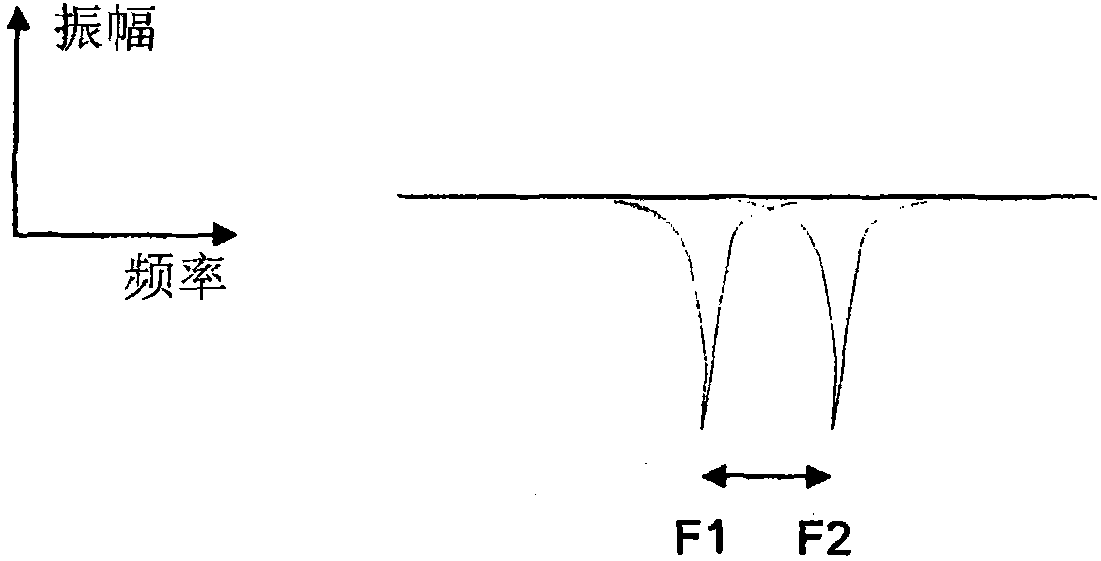Sensing system and method
A sensing system and sensing element technology, applied in the field of sensing systems, can solve problems such as unsatisfactory technology, real-time sensors, impractical and time-consuming continuous monitoring
- Summary
- Abstract
- Description
- Claims
- Application Information
AI Technical Summary
Problems solved by technology
Method used
Image
Examples
Embodiment Construction
[0029] see figure 1 , showing a schematic diagram of a wireless transceiver 1 with an antenna 2 . A part of the material 3 (for example, a polymer material) has a matrix structure in which a plurality of sensing elements 4 are embedded such that the sensing elements 4 are dispersed within the matrix material 3 and covered by the matrix material 3 around. The sensing element 4 has electron distribution and / or transport properties that change in response to changes in the physical or chemical properties of the material. This behavior results in a change in a radio frequency (RF) signal (eg a microwave signal) transmitted from the transceiver 1 via the antenna 2 to interrogate the matrix material 3 , so that the change in the material can be determined from the received signal. In this way, the sensing element 4 allows non-invasive, intrinsic sensing of changes in the properties of the material.
[0030] The radio transceiver 1 is constructed to generate a modulated radio freq...
PUM
 Login to View More
Login to View More Abstract
Description
Claims
Application Information
 Login to View More
Login to View More - R&D
- Intellectual Property
- Life Sciences
- Materials
- Tech Scout
- Unparalleled Data Quality
- Higher Quality Content
- 60% Fewer Hallucinations
Browse by: Latest US Patents, China's latest patents, Technical Efficacy Thesaurus, Application Domain, Technology Topic, Popular Technical Reports.
© 2025 PatSnap. All rights reserved.Legal|Privacy policy|Modern Slavery Act Transparency Statement|Sitemap|About US| Contact US: help@patsnap.com



